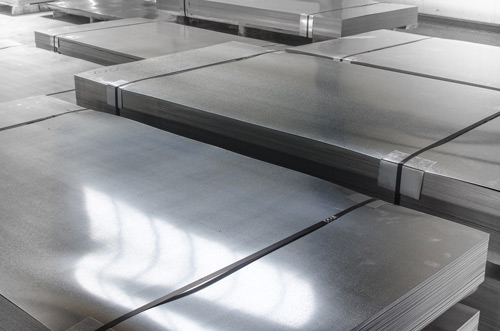Architectural sheet metal is often used for structural support or framing, and it can be customized to match the specific needs of a project. But, What Does Architectural Sheet Metal Mean? There is no one answer to this question as the meaning of architectural sheet metal can vary depending on the context in which it is used. However, in general, Architectural sheet metal is a type of metal used in the construction of buildings and other structures. It is usually made of a thin, strong sheet that is folded and welded together to create a finished product.
Sheet Metal Construction is a highly specialized field that requires years of experience, training, and certification to be a successful practitioner. However, with the right tools and the proper techniques, anyone can successfully design, fabricate and install metal building components. Knowing What Does Architectural Sheet Metal Mean, you must understand why you should consider sheet metal.
One reason why architects should consider using sheet metal construction services is that metal buildings are not only durable but also aesthetically pleasing. Not only do they offer a modern look but they’re also fire-resistant and sound-proofing. Additionally, Architectural Metal Construction can save you time and money in the long run by providing you with more efficient and reliable construction methods.
If you’re interested in learning more about sheet metal construction or if you need help finding qualified professionals who can provide you with the best possible solution for your building project, contact ASM Sheet Metal today.
The uses of steel in architecture are diverse and expansive. As one of the most versatile building materials available, steel can be used for everything from structural beams and columns to finishes and ornamental details. By understanding What Does Architectural Sheet Metal means, here are some of the architectural uses of steel that you may not have considered:
Structural beams and columns: Steel is a strong and durable material that makes excellent structural elements for buildings. It’s often used in combination with other materials, like concrete, to create sturdy frameworks that support floors, ceilings, walls, and other structures.
Finishes and ornamental details: Steel is an excellent choice for finishes on interior walls and ceilings, as well as ornamentation on exterior walls or rooflines. Its appearance isn’t easily damaged by weather or sunlight, so it can be used in places where other materials wouldn’t be as resilient or visible.
The purpose of architectural sheet metal is to protect buildings from weather and other environmental factors. It can also add aesthetic value to a structure. Sheet metal is often used in commercial or industrial settings but can be used in any building.

A few years ago, when looking for architectural sheet metal, most people would have gone to their local hardware store. However, with the rise of online shopping, this is no longer the case. Today, there are many places to find high-quality architectural sheet metal like American Sheet Metal. Here are some of the tips to find high-quality Architectural Sheet Metal:
When looking for quality architectural sheet metal, it is important first to consider the material’s gauge and thickness. Gauge is the number of wires in a linear inch and thickness is the distance between those wires. The higher the gauge and thickness, the stronger and more durable the sheet metal will be.
It is also important to look for a manufacturer that has a good reputation for producing high-quality sheet metal. Reputable manufacturers will have a long history of producing quality products, meaning that you can be sure that their sheet metal will meet your expectations.
Finally, make sure to ask your supplier about any guarantees or warranties that they offer. This way, you can be sure that you are getting what you paid for and that there are no hidden surprises down the road.
Knowing What Does Architectural Sheet Metal Mean, you may want to know the main goals of an architectural sheet metal specialist. There are many goals of an architectural sheet metal specialist. These include being able to create beautiful and functional designs, solving problems with sheet metal, and meeting the needs of the clients.

© 2024 American Sheet Metal - All Rights Reserved